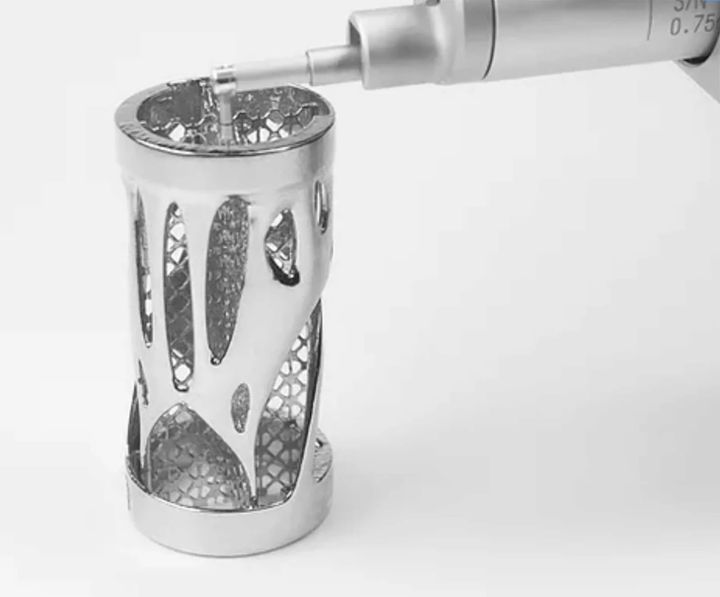
Additive manufacturing (AM) can now produce high-quality parts in metal alloys.
It is increasingly being used for structural aerospace applications. This is possible because, unlike with early metal AM processes, parts are now fully dense with few pores and gain structures often equivalent to a forged part. Powder bed fusion (PBF) processes are also able to achieve tight tolerances, while directed energy deposition (DED) wire-fed processes give rapid material deposition rates. However, AM results in relatively poor surface finish. For PBF, the surfaces include partially fused powder and deposition layers may be visible.
Rough surface finish makes inspection difficult and reduces performance in terms of fatigue and fracture toughness. Although surface finish is continuing to improve, surface machining or shot peening are often needed to improve surface finish.
Internal surfaces and some small features may be difficult to finish in this way. This often means that topology optimized components cannot be inspected for crack initiation defects, and therefore cannot be certified for aerospace applications.
New methods of improving surface finish, such as abrasive flow machining and electro-chemical milling, may enable internal and delicate features to obtain good surface finish.
This would allow intricate topology optimized components to achieve the fracture toughness and inspectability required for aerospace structures, fully realizing the potential of additive manufacturing.
Why Additive Manufacturing Produces Rough Surfaces
Wire-fed DED processes, based on established welding methods, can rapidly and cost-effectively produce large, complex, near net shape components. They key advantage of DED processes is the rapid deposition rate, although this also creates some issues. The speed of deposition means that heat dissipation becomes an issue, meaning post-process heat treatments are often required for stress relief and distortion may occur.
The large melt pool also results in weld-bead shaped deposits, meaning the entire surface of DED parts is normally machined. Less invasive surface finish improvement is therefore not relevant to these processes.
PBF processes give an as-deposited surface finish that can be acceptable for many applications. They can also produce fine features with intricate detail. This all means that fully machining the surfaces would not be appropriate. These processes use a laser or electron beam to fuse metallic powder in a powder bed.
The surface finish obtained is related to the powder particle size, which typically ranges from 5 to 60 µm. The as-deposited surfaces of PBF components feature partially fused powder. Deposition layers may be visible, although surface roughness measurements are no higher when profiles are taken across the layers than when they are taken along a single layer.
The surface texture depends on powder particle size, melt parameters, layer thickness and the orientation of surfaces relative to the build plate.
Read more at ENGINEERING.com
